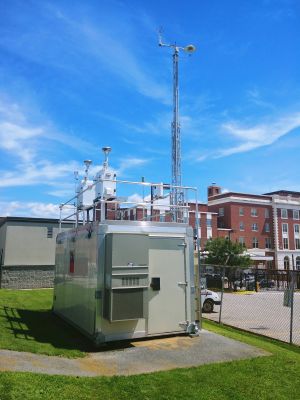Monitoring Network Design
The Air Monitoring Section maintains an air-quality monitoring program to measure ozone, nitrogen oxides, carbon monoxide, particulate matter, sulfur dioxide, volatile organic compounds, carbonyls and sulfate. There are monitoring stations in Underhill, Burlington (2/2024 temporary suspended), Rutland, and Bennington. Below is the configuration of Vermont's ambient air monitoring network for 2023.
2023 Vermont Ambient Air Monitoring Network
Click on Site location to view full Site Information. (Mt. Snow & Bennington Old Reservoir unavailable)

